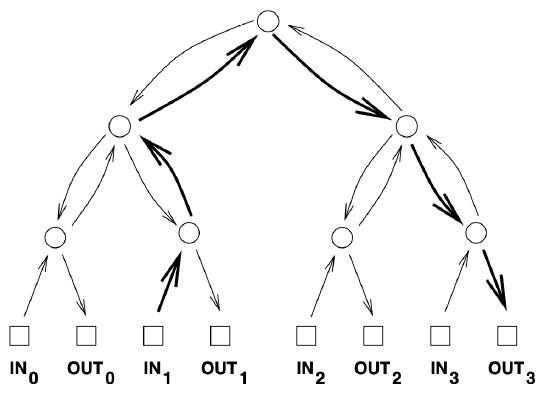10.2: Routing Problems
- Page ID
- 48357
Communication networks are supposed to get packets from inputs to outputs, with each packet entering the network at its own input switch and arriving at its own output switch. We’re going to consider several different communication network designs, where each network has \(N\) inputs and \(N\) outputs; for convenience, we’ll assume \(N\) is a power of two.

Which input is supposed to go where is specified by a permutation of \(\{0, 1, \ldots, N - 1\}\). So a permutation, \(\pi\), defines a routing problem: get a packet that starts at input \(i\) to output \(\pi (i)\). A routing, \(P\), that solves a routing problem, \(\pi\), is a set of paths from each input to its specified output. That is, \(P\) is a set of \(n\) paths, \(P_i\), for \(i = 0 \ldots ,N - 1\), where \(P_i\) goes from input \(i\) to output \(\pi (i)\).


